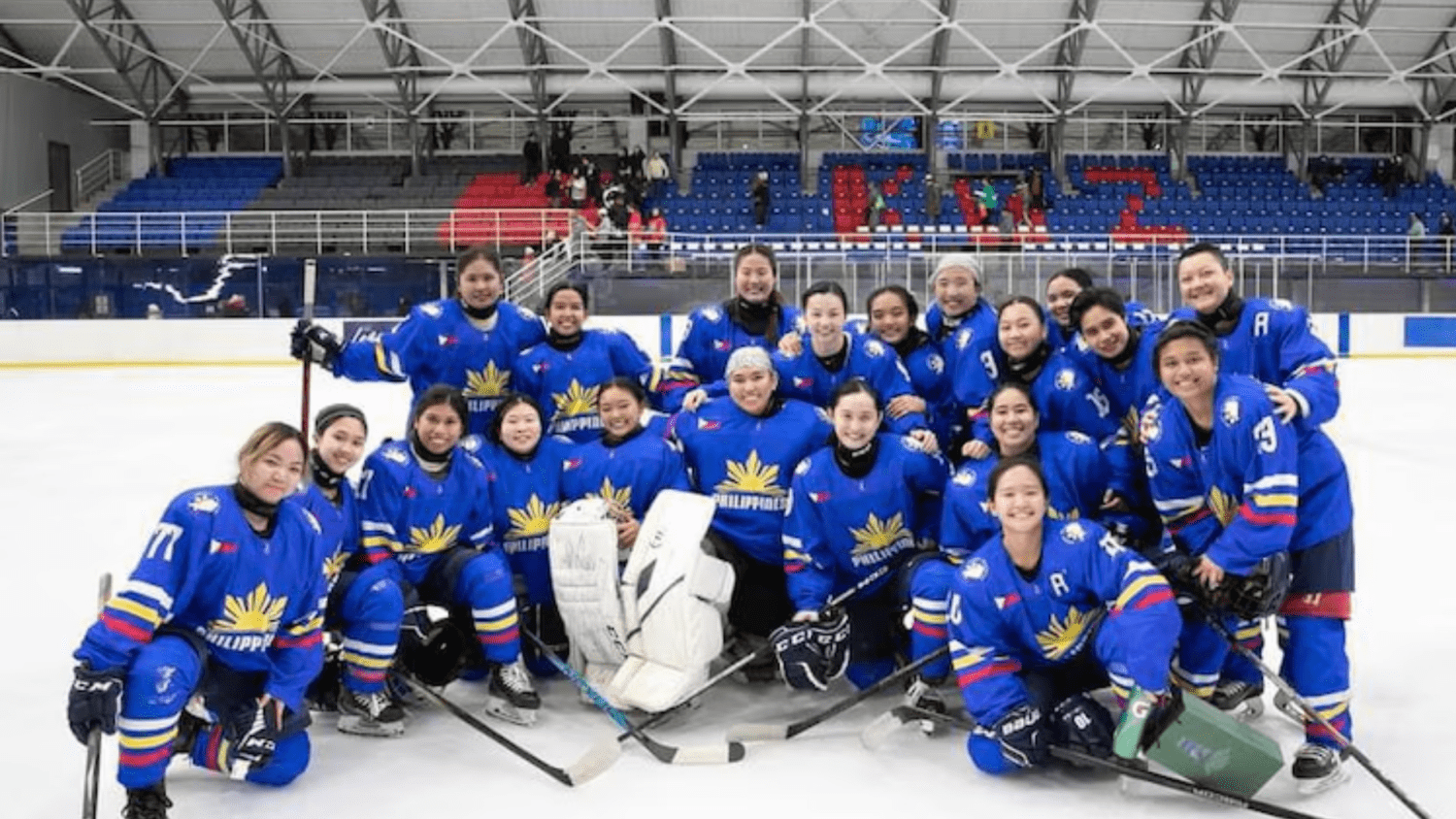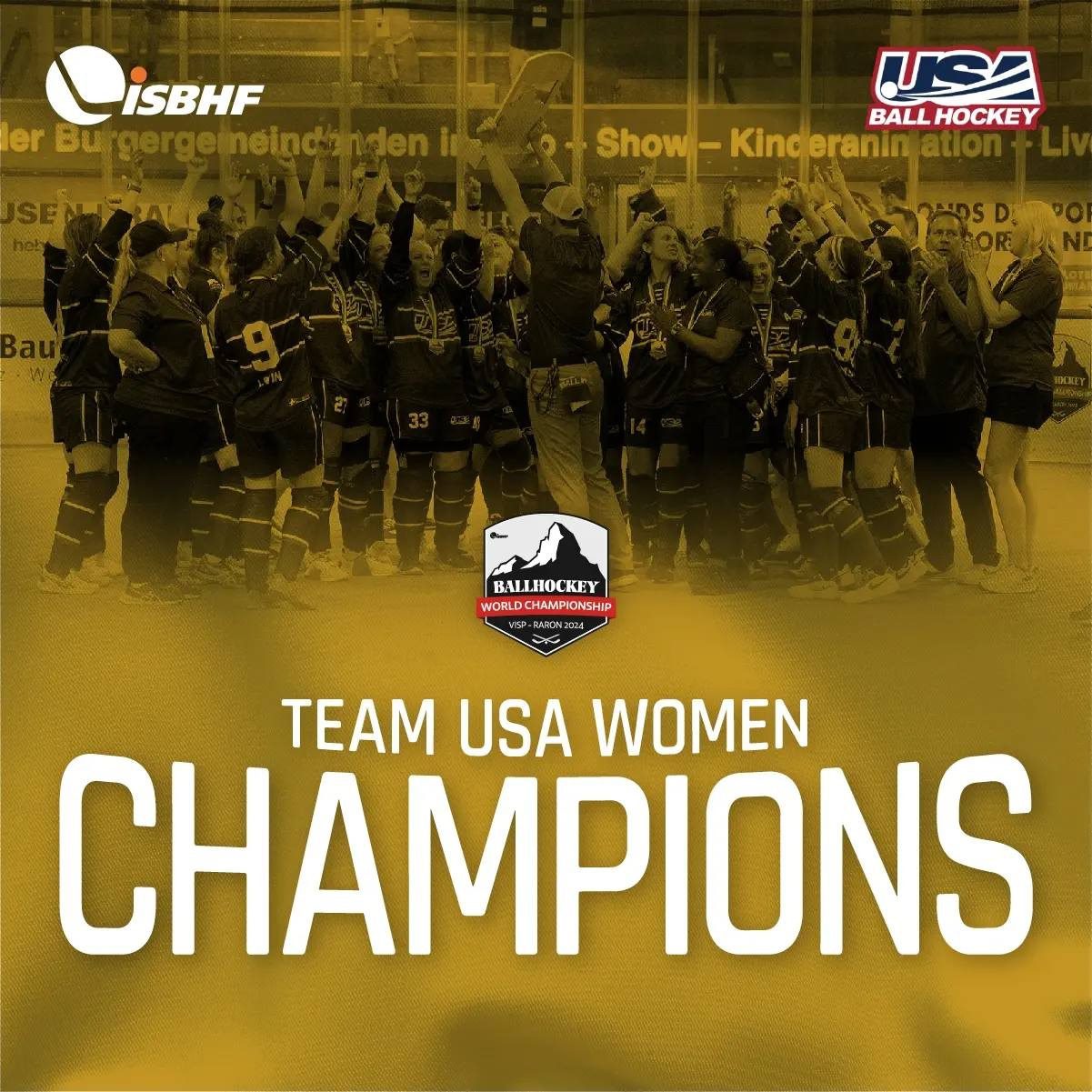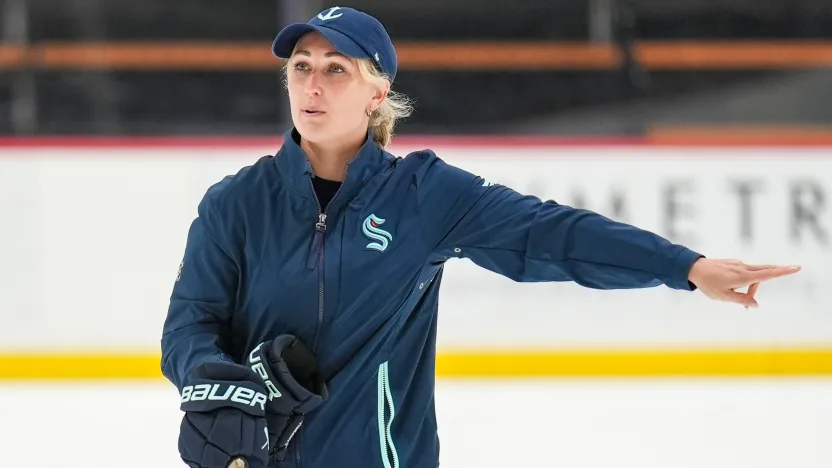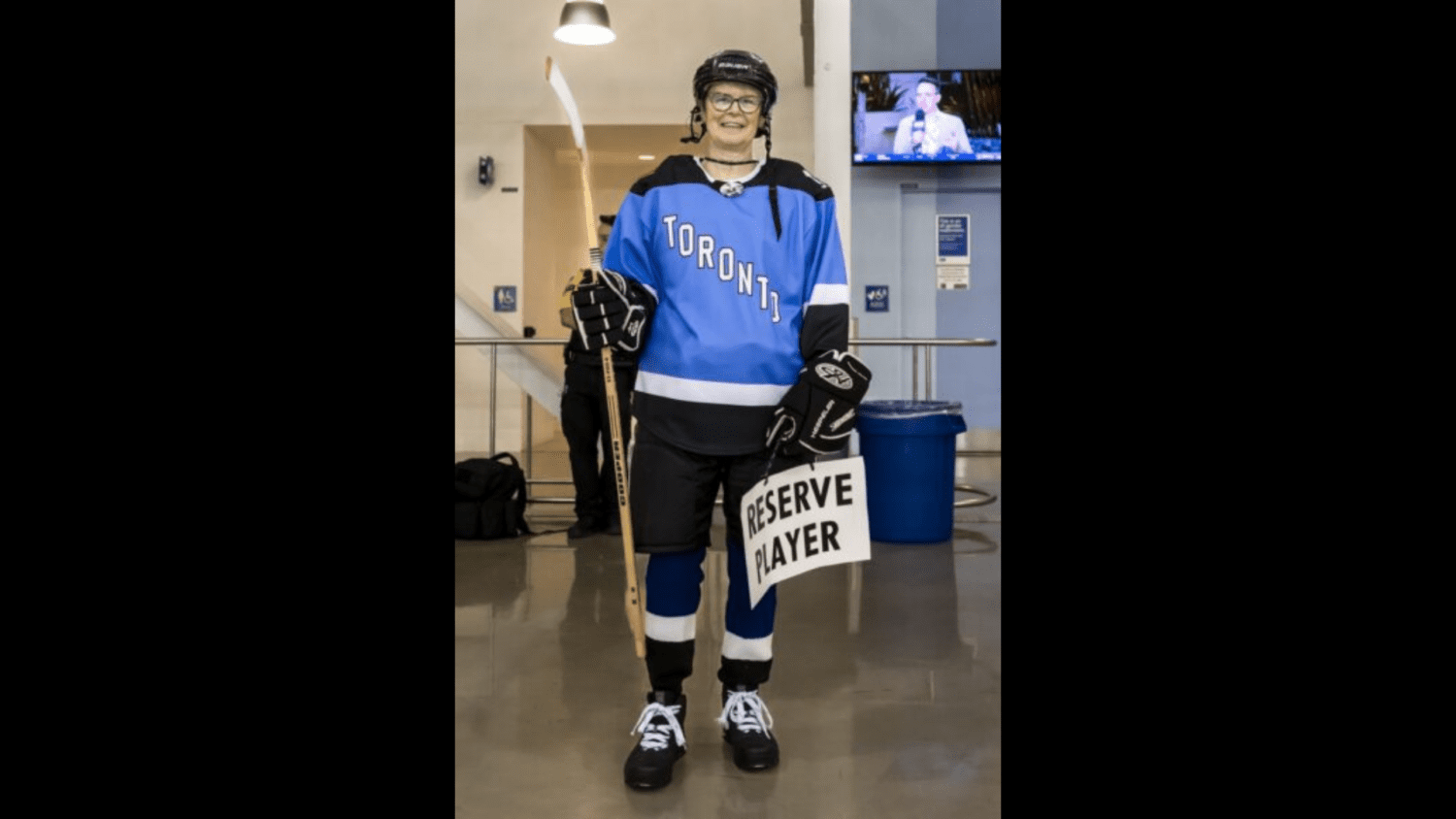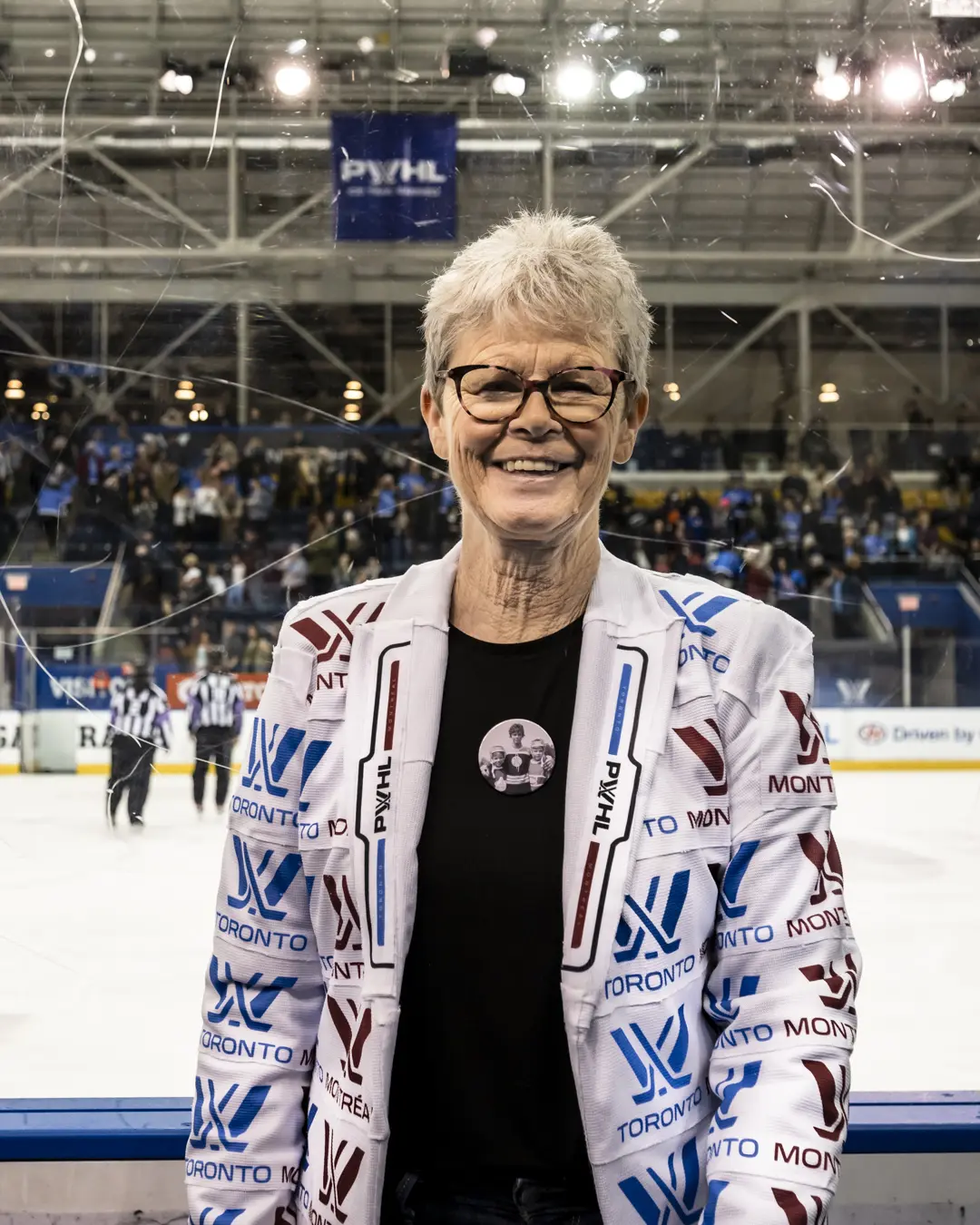Women in hockey have been facing public backlash since the birth of the game
Women in hockey have been facing public backlash since the birth of the game in the late 1800s. But despite all the pushback, we’ve never stopped playing.
The earliest records of women “hockeyists” on file are photographs from the 1880s, which show both men and women playing the game at skating parties hosted by Lord and Lady Stanley at Rideau Hall, with the women playing in full skirts.[I] The first documented organized women’s game occurred in 1889 between the Government house team (featuring Lord Stanley’s daughter Isobel), and the Rideau Ladies.[ii]
These women hockey players were among thousands to join teams over the next decade, as women’s hockey expanded almost simultaneously to the men’s game.
Women playing hockey is nothing new
The turn of the century would see the creation of women’s varsity hockey teams in universities such as McGill, Laval, Queens, and the University of Toronto, all part of the Ladies’ Ontario Hockey Association, the “LOHA.”[iii] Up until the Second World War, Canadian women were able to compete for the Eastern and Western Canada titles (when finances allowed), and the winners would have a shot at championship glory in informal “Dominion Championships,” which, although not officially sanctioned, were the closest women could come to a “National” tournament in the 1920s, ‘30s, and ‘40s.
Women’s hockey was fairly well-received by fans in this period, who would often pay to watch their favourite women’s teams battle it out at the rink. The infamous Preston Rivulettes (who maintained a win-loss record of 348 wins to only two losses, the all-time best ratio in either men’s or women’s hockey history), for example, reportedly drew over 6,000 fans to one of their matches in Galt, Ontario, in 1935.[iv]
Yet despite this strong fanbase, the rebellious women of the early 1900s were not supported by the population at large, and faced boatloads of criticism from the media. Take, for example, one article written by Mr. Andy Lytle in 1913, which stated that hockey could damage our “delicate bodies,” remove our “polish,” and make us “leather-limbed and inclined to flat chests.”[v] Or again, take the first Queen’s University women’s team, who aptly named themselves the Love-Me-Littles due to the complete lack of support they had in their community.[vi]
Nonetheless, the first half of the 1900s saw sports like hockey rise in popularity among its high-spirited youth despite the wishes of more traditionally-valued individuals, creating a demographic rift in public opinion similar to today.
Women’s hockey was not simply an entertaining novelty item
The sport’s increase in popularity prior to the war proves that women’s hockey was not simply an entertaining novelty item as it might have been perceived at the beginning, but that the players had developed a sound and lasting skill appreciated by their many spectators. In the late 1930’s, the Preston Rivulettes had even planned a hockey tour through Europe to showcase their skills oversees and promote global interest in the sport, in an attempt to include women’s hockey in the Olympic Games. Unfortunately, this tour was cancelled due to the onset of WWII.[vii]
The story of the incredible Preston Rivulettes was also recently the subject of the fabulous stage production Glory by Canadian playwright Tracey Power – and the show is definitely worth your time! Moreover, Glory captures the precise moment when women’s hockey began to face a difficult reality, as all the forward momentum for girls in sport was put to a halt after the golden days of the 1930s.
The problem ultimately lay in the culture shift that occurred in Western society following the Second World War. During the 1940s and ‘50s, women’s hockey was largely put on hold in favour of the war effort, and very few women’s teams remained operational. This era would also see the NHL suffer the loss of nearly its entire roster, replaced by underage boys and military rejects. However, the men’s game continued to be aired on radio and covered by the media, to “boost morale” for the fighting population. In contrast, the women’s game almost never reached the newspapers or airwaves.[viii]
Let’s pause here and compare the lapse in women’s hockey to the revolutionary baseball flip-flop that occurred during WWII: this period would see the creation of the first ever All-American Girls’ Professional Baseball League (AAGPBL) in 1943 (also featuring players from Canada and Europe), which was intended to replace the MLB while the men were overseas. Sadly, this amazing opportunity for elite women was still wrought with sexism – the players were forced to wear ridiculous dresses as uniforms, take mandatory “charm” classes, and could be fined for having short hair or not wearing lipstick in public.[ix]
This interesting period was documented in the historical-fiction film A League of Their Own, directed by Penny Marshall. It’s a fantastic work of art that captivates the audience but also helps to reveal the complexity of the issues these women had to face in their daily lives. Unfortunately, poor business strategy and stronger marketing for the men’s team after the war would see the AAGPBL disintegrate by 1954.
In terms of hockey after the war, the NHL came back stronger than ever and became televised as of 1952.[x] The progress made by women’s rights activists in the first half of the century would be halted and even reversed after the men returning from Europe demanded that women abandon the work world and return to the kitchen. The same went for women who had entered the sports world, resulting in a severe decline in the social acceptance of women hockey players until the moral upheavals of the 1960s.
It was during my childhood in the 1960s and ‘70s that public interest in women’s hockey began to slowly resurface, and hundreds of girls ditched their figure skates for hockey ones, and made their way onto the ice to play the sport they loved.
I shared in this challenging collective journey and faced no shortage of insults and obstacles in the process. I hope that by documenting and sharing my experiences from this period in history in my upcoming memoir OFFSIDE, I can join Glory and A League of Their Own in contributing to the much-needed cultural shift away from discriminatory patriarchal values. It is precisely by taking the time to analyze and explain the difficult dynamics of the social structures at play in each geo-temporal situation, that we can find the reasons behind each case of gender inequality, seek solutions for each problem, and share those solutions with others so that we can take collective action as a society.
Will you join us?
Rhonda Leeman Taylor was the chair organizer of the first ever Canadian Women’s National Championships in 1982, the first director of the Female Council, and the first woman to sit on the CAHA (Hockey Canada) Board of Directors. Rhonda is currently writing a memoir called “OFFSIDE” about her years as a player, coach, and administrator in women’s hockey, and the struggles and discrimination she had to overcome therein.
To learn more or to pre-order the book visit www.rhondaleemantaylor.com.
References:
[i]McFarlane, Brian. Proud Past, Bright Future: One Hundred Years of Canadian Women’s Hockey. Toronto, Stoddart, 1994, p. 4.
[ii]Ibid., p. 7.
[iii]Ibid., p. 63.
[iv]Etue, Elizabeth, and Megan K. Williams. On the Edge: Women Making Hockey History. EPUB ed., Toronto, Second Story Press, 1999, p. 41-43.
[v]Comment made by Andy Lytle, journalist for the Vancouver Sun, 1913; quoted in McFarlane, Brian. Proud Past, Bright Future: One Hundred Years of Canadian Women’s Hockey. Toronto, Stoddart, 1994, p. 49.
[vi]McFarlane, Proud Past, Bright Future, p. 16.
[vii]Power, Tracey. Glory. 26 July 2019, Thousand Islands Playhouse. Performance.
[viii]Ibid., p. 107.
[ix]“League History,” All-American Girls’ Professional Baseball League,https://www.aagpbl.org/history/league-history. Accessed 7 Aug. 2019.
[x]Etue and Williams, On the Edge, p. 41-42.
[adrotate group=”1″]
Related Articles
Categories
Recent Posts
[adrotate group=”2″]




